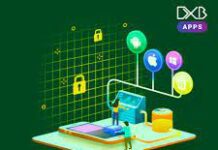In today’s digital age, educational institutions are continually seeking innovative ways to enhance the learning experience for students. Integrating Learning Management Systems (LMS) with Student Management Systems (SMS) has emerged as a powerful strategy to streamline administrative processes, improve communication, and create a cohesive educational ecosystem. In this beginner’s guide, we’ll explore the benefits and best practices for integrating LMS with SMS to deliver a seamless educational experience.
- Understanding Learning Management Systems (LMS) and Student Management Systems (SMS): Learning Management Systems (LMS) are software platforms designed to manage and deliver educational content, facilitate online learning, and track student progress. On the other hand, Student Management Systems (SMS) are used to manage student data, enrollment, attendance, grades, and other administrative tasks.
- The Need for Integration:
While LMS and SMS serve distinct purposes, integrating these systems offers numerous benefits for educational institutions. Integration allows for seamless data exchange between the two platforms, eliminating duplicate data entry, reducing administrative overhead, and enhancing the overall efficiency of educational operations. - Streamlining Administrative Processes:
By integrating LMS with SMS, educational institutions can streamline administrative processes such as enrollment, course registration, and grading. Students can automatically enroll in courses based on their academic records stored in the SMS, while instructors can access student information and grades directly from the LMS, eliminating the need for manual data entry. - Improving Communication and Collaboration:
Integration between LMS and SMS facilitates seamless communication and collaboration between students, instructors, and administrators. Students can receive notifications about course updates, assignments, and deadlines directly through the LMS, while instructors can communicate with students and provide feedback in real-time. Administrators can also track student progress and address academic concerns more efficiently. - Enhancing Data Accuracy and Reporting:
Integrating LMS with SMS ensures data accuracy and consistency across educational systems. By maintaining a single source of truth for student data, institutions can generate comprehensive reports on student performance, enrollment trends, and academic outcomes. Accurate data enables informed decision-making and enhances accountability at all levels of the institution. - Facilitating Personalized Learning Experiences:
Integration between LMS and SMS enables educational institutions to deliver personalized learning experiences tailored to individual student needs and preferences. By leveraging student data stored in the SMS, instructors can customize course content, assignments, and assessments to address specific learning objectives and accommodate diverse learning styles. - Ensuring Data Security and Compliance:
When integrating LMS with SMS, data security and compliance with privacy regulations must be a top priority. Educational institutions should implement robust security measures, such as encryption, authentication, and access controls, to protect sensitive student information. Compliance with regulations such as the Family Educational Rights and Privacy Act (FERPA) ensures the confidentiality and security of student data. - Best Practices for Integration:
To ensure a successful integration between LMS and SMS, educational institutions should follow best practices such as thorough planning, stakeholder engagement, and testing. Collaboration between IT departments, academic departments, and administrative staff is essential to identify integration requirements, define workflows, and address any technical challenges. - Centralized Data Management: Integration allows for centralized data management, where all student information, academic records, and course materials are stored in one comprehensive system. This centralized approach reduces data silos and ensures that stakeholders have access to up-to-date and accurate information.
In conclusion , integrating Learning Management Systems with Student Management Systems offers significant benefits for educational institutions, including streamlined administrative processes, improved communication, enhanced data accuracy, and personalized learning experiences. By adopting best practices for integration and prioritizing data security and compliance, institutions can create a seamless educational ecosystem that empowers students, instructors, and administrators alike.
Read More Blog Here






